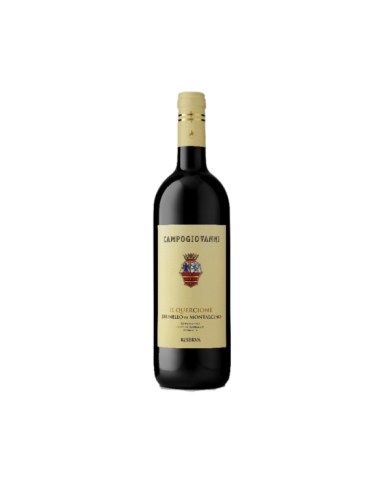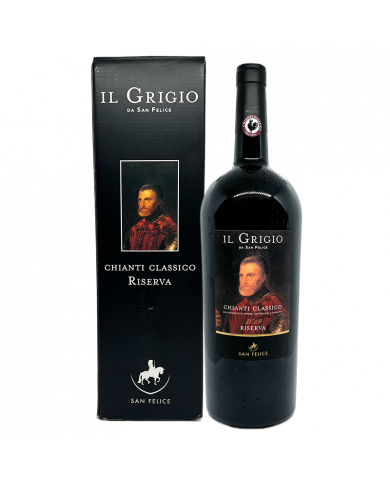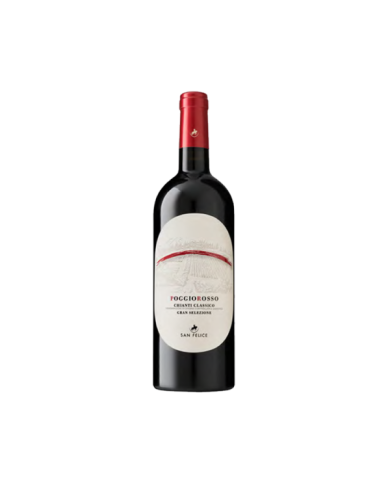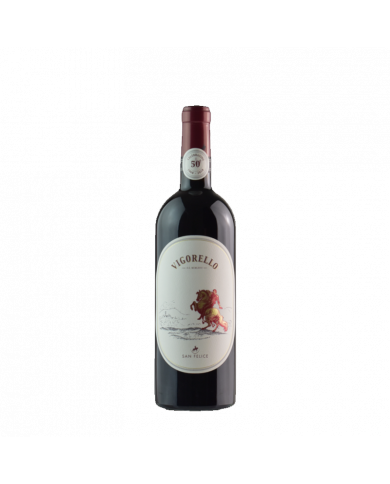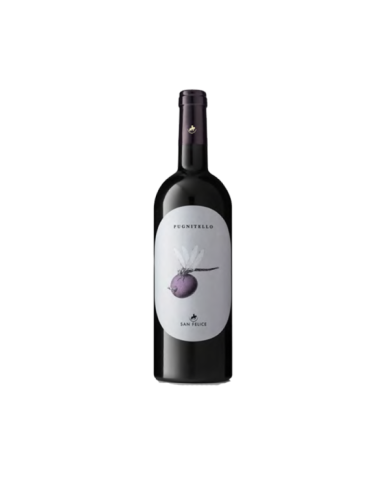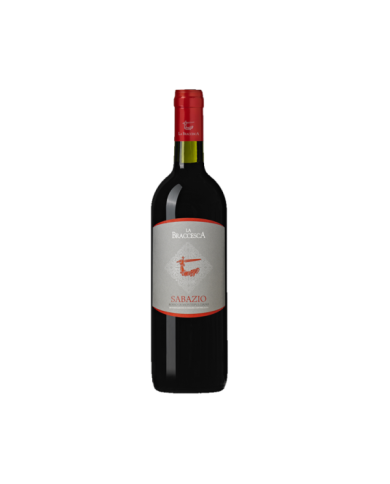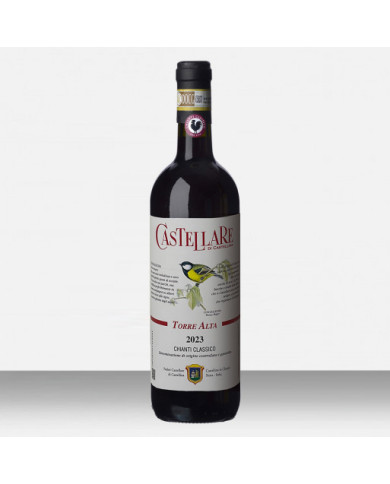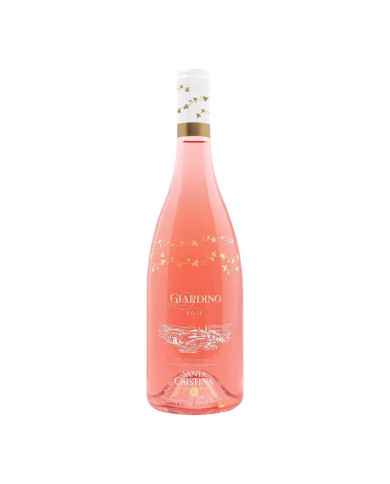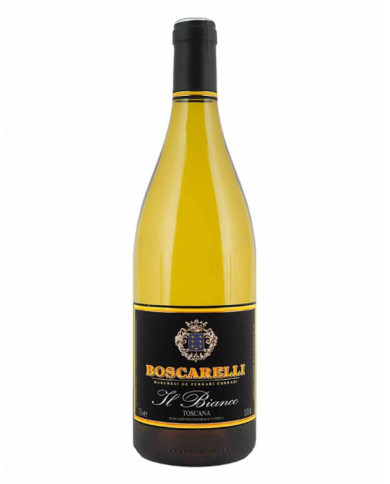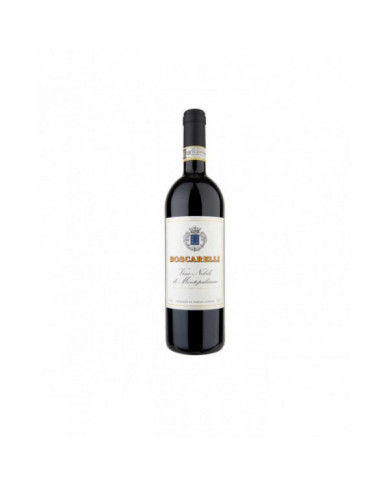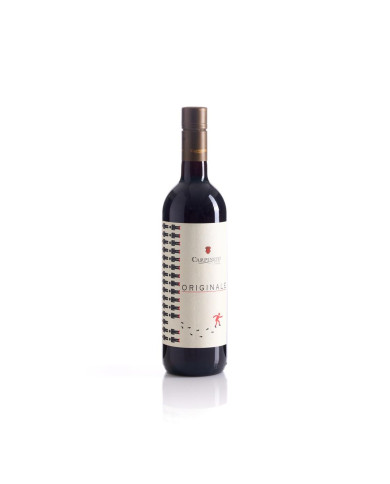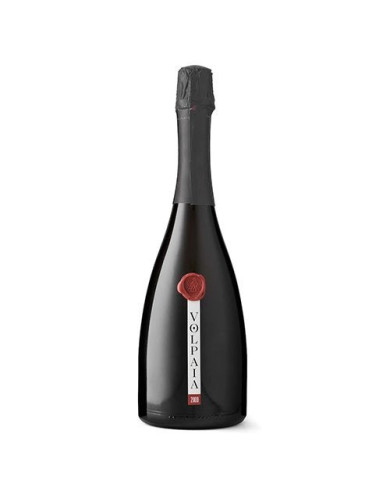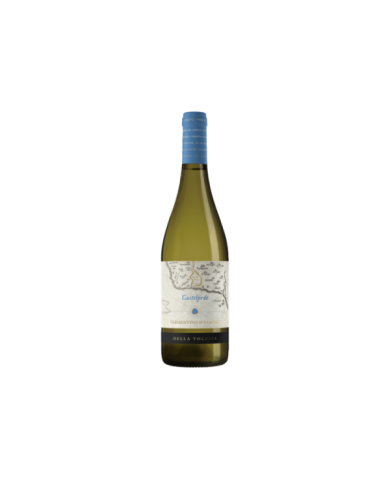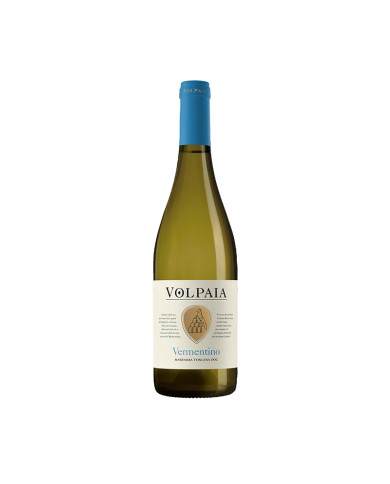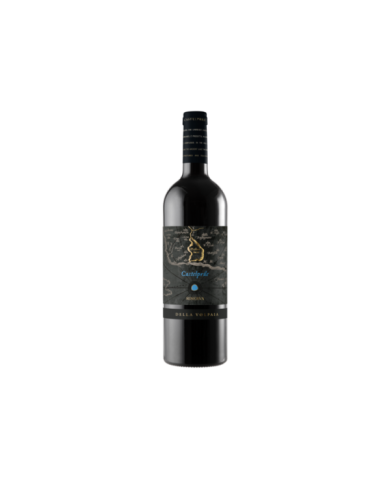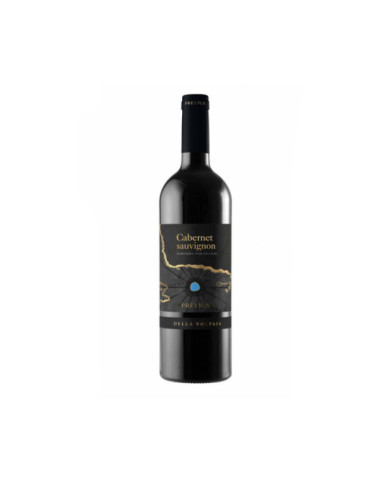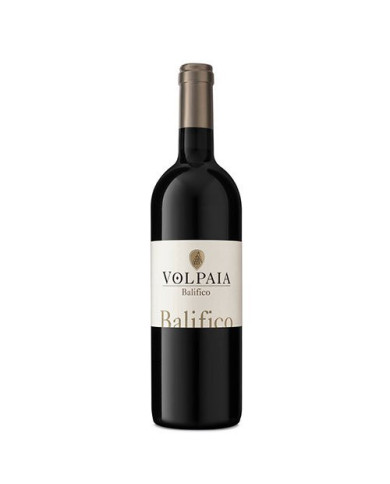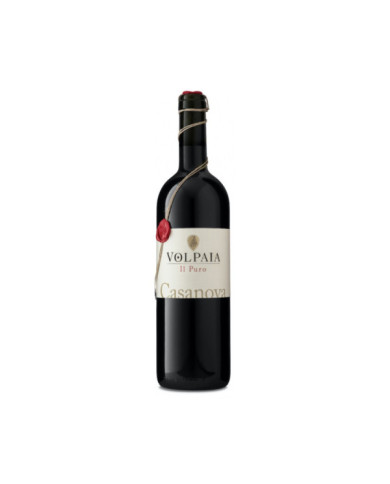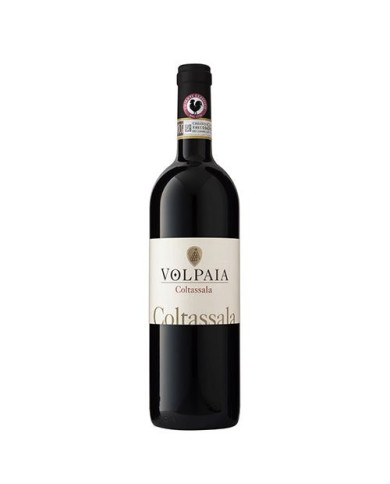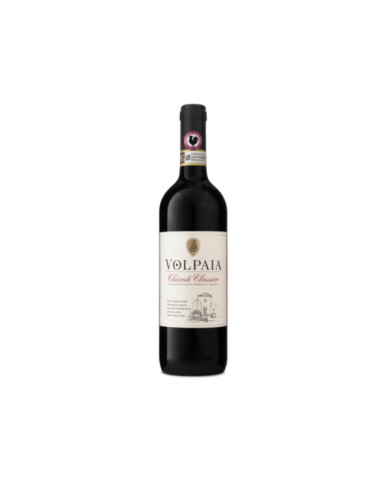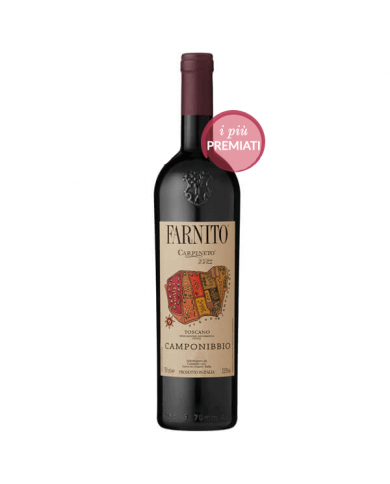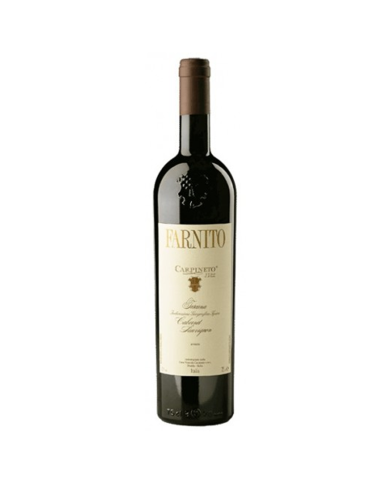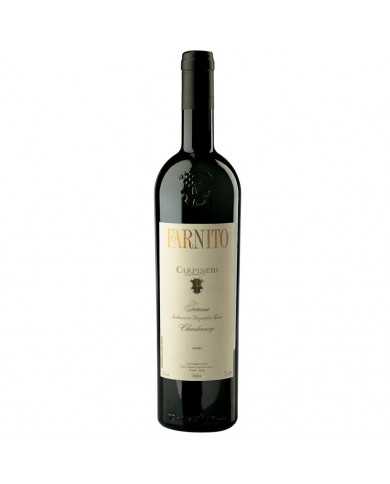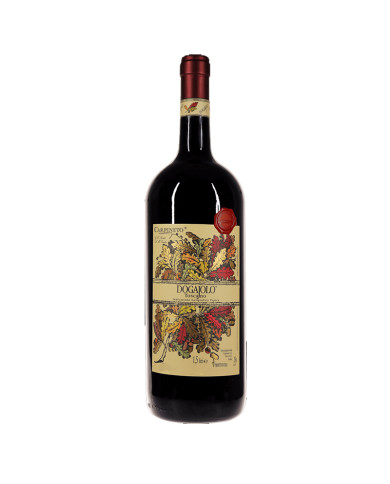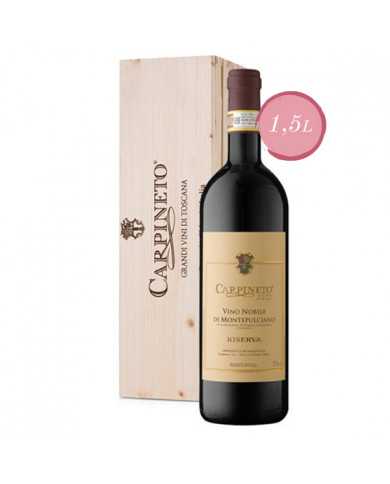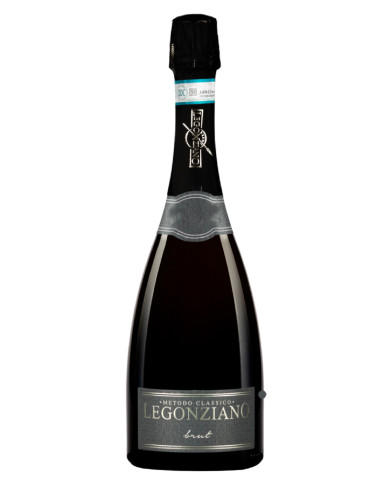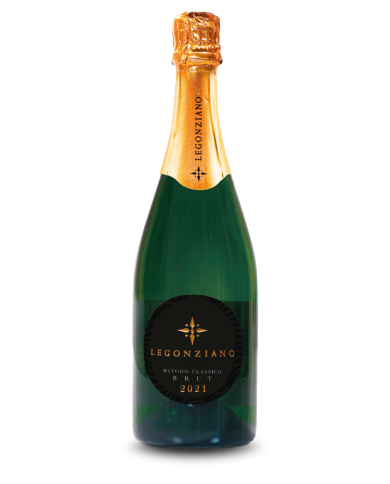Produced exclusively in exceptional vintages, this Riserva represents for San Felice the maximum expression of the 'terroir' of Campogiovanni. Coming from the careful selection of Sangiovese grosso from the 'Il Quercione' vineyard of about 2.5 hectares, it is a wine that combines rigor, concentration, elegance as well as an extraordinary capacity for aging. Refine for 24 months in 500-liter French oak barrels. (tonneaux) and 36 months in the bottle.
Produced exclusively in exceptional vintages, this Riserva represents for San Felice the maximum expression of the 'terroir' of Campogiovanni. Coming from the careful selection of Sangiovese grosso from the 'Il Quercione' vineyard of about 2.5 hectares, it is a wine that combines rigor, concentration, elegance as well as an extraordinary capacity for aging. Refine for 24 months in 500-liter French oak barrels. (tonneaux) and 36 months in the bottle.
Produced exclusively in exceptional vintages, this Riserva represents for San Felice the maximum expression of the 'terroir' of Campogiovanni. Coming from the careful selection of Sangiovese grosso from the 'Il Quercione' vineyard of about 2.5 hectares, it is a wine that combines rigor, concentration, elegance as well as an extraordinary capacity for aging. Refine for 24 months in 500-liter French oak barrels. (tonneaux) and 36 months in the bottle.
Only the best Sangiovese grapes selected in the company's Chianti Classico vineyards make up this Reserve, a valid combination of tradition and modernity. It ages for about 24 months in wood, of which a part (about 20%) in barriques, and one year in bottle. The label depicts a famous painting by Titian 'Man with armor'.
Already towards the end of the 70s, in the locality of Poggio Rosso, some selected clones of Sangiovese were planted several times. Poggio Rosso is the result of a careful selection of this grape from some plots of the vineyard of the same name and today represents the excellence of the San Felice terroir. Wine of great concentration and elegance, produced in limited quantities and, especially in the best vintages, it ages for about 20 months in 500-liter tonneaux and another 12 months in the bottle.
Already towards the end of the 70s, in the locality of Poggio Rosso, some selected clones of Sangiovese were planted several times. Poggio Rosso is the result of a careful selection of this grape from some plots of the vineyard of the same name and today represents the excellence of the San Felice terroir. Wine of great concentration and elegance, produced in limited quantities and, especially in the best vintages, it ages for about 20 months in 500-liter tonneaux and another 12 months in the bottle.
Already towards the end of the 70s, in the locality of Poggio Rosso, some selected clones of Sangiovese were planted several times. Poggio Rosso is the result of a careful selection of this grape from some plots of the vineyard of the same name and today represents the excellence of the San Felice terroir. Wine of great concentration and elegance, produced in limited quantities and, especially in the best vintages, it ages for about 20 months in 500-liter tonneaux and another 12 months in the bottle.
Tradition and Future The first Supertuscan in Chianti Classico since 1968. It has an important history and today it stands out in the wine market of this category for a reason: it combines the tradition of international vines such as Cabernet and Merlot with the inclusion of a native variety, il Pugnitello, which is unique to San Felice .
Pugnitello is an ancient Tuscan vine, (named for the shape of its cluster that recalls a small fist), rediscovered and studied in collaboration with the Universities of Florence and Pisa in the experimental vineyards of San Felice (Vitiarium). The concrete fruit of 20 years of research and experimentation aimed at saving and enhancing native Tuscan vines destined for extinction. This pure version stands out for its originality and marked characteristics of softness and fleshiness.
Pugnitello is an ancient Tuscan vine, (named for the shape of its cluster that recalls a small fist), rediscovered and studied in collaboration with the Universities of Florence and Pisa in the experimental vineyards of San Felice (Vitiarium). The concrete fruit of 20 years of research and experimentation aimed at saving and enhancing native Tuscan vines destined for extinction. This pure version stands out for its originality and marked characteristics of softness and fleshiness.
Pugnitello is an ancient Tuscan vine, (named for the shape of its cluster that recalls a small fist), rediscovered and studied in collaboration with the Universities of Florence and Pisa in the experimental vineyards of San Felice (Vitiarium). The concrete fruit of 20 years of research and experimentation aimed at saving and enhancing native Tuscan vines destined for extinction. This pure version stands out for its originality and marked characteristics of softness and fleshiness.
La Vigna Del Lago It can happen to come across unexpected places, the Vigna del Lago, as in this 100% Chardonnay, unexpected white single-vineyard and newcomer in the San Felice house of particular aromatic freshness and flavor, carefully selected grapes and soil with unique characteristics, on which traces of the ancient Etruscan presence remain.
Sabazio is characterized by a ruby red color with brilliant reflections. The nose opens with a delicate floral bouquet, enriched by pleasant fruity scents. On the palate it is fresh, pleasantly persistent and with a balanced acidity.
Il Vino rosso Il Puro Casanova Chianti Classico Gran Selezione DOCG, Annata 2020 della cantina Castello di Volpaia ├© stato valutato nel 2024 da Othmar Kiem, Simon staffler con 95 punti Falstaff. Si tratta di un vino della variet├Ā Sangiovese proveniente da la regione Toscana in Italia.
Tuscan VinsantoŌĆ” a wine whose origins are lost in the mists of time. Vinsanto in Tuscany is such an important wine full of meaning that it was difficult to buy, it was an ambition to make it at home with your own hands; in every family there was a person in charge of this art, usually the father or grandfather. The hypothesized origins of this exquisite drink, as well as those of its singular name are different and are lost in the mists of time. A Sienese legend says that in the 14th century a friar distributed a wine that healed the sick, hence the belief that it was a miraculous wine, "Santo". However, it cannot be excluded that the name "holy" derives from the use that has always been made of it during Mass.
Camponibbio is a large vineyard located at high density located in the southern part of our company of Chianciano in the province of Siena. It is divided into nine plots in which different vines are grown in different clones. Each harvest, the grapes of the varieties that have responded best to the seasonal trend are chosen. The blend essentially, made up of Sangiovese, Cabernet Sauvignon and Merlot, varies year by year, in percentages and varieties.
Produced with grapes from vineyards of the companies of Gaville (Florence) and Chianciano/Montepulciano (Siena), the latter planted at high density and considered by us to be particularly happy and suitable for producing great wines.
Produced with grapes from vineyards of the companies of Gaville (Florence) and Chianciano/Montepulciano (Siena), the latter planted at high density and considered by us to be particularly happy and suitable for producing great wines.
Produced with grapes from vineyards of the companies of Gaville (Florence) and Chianciano/Montepulciano (Siena), the latter planted at high density and considered by us to be particularly happy and suitable for producing great wines.
Produced from grapes from our vineyards on our Chianciano/Montepulciano estate at an altitude of 300 meters above sea level.
Dogajolo is certainly one of the most innovative wines produced today and we, as Azienda Carpineto, have the honor of having created it. All those characteristics that are most appreciated in wine are enclosed in him: the strength of youth, the maturity of the wood, the softness of the class, the fruity and fragrant aromas, the lively and deep colors.
A great red wine, it takes its name from Montepulciano, a Renaissance city in the province of Siena, which dominates the wide and verdant Valdichiana from the top of a hill. The appellation of "Nobile" seems to derive not only from its intrinsic qualities of finesse and elegance, but also from the fact that in the past the production of this wine was particularly cared for by the noble families of the city.
Discover the best wines of Tuscany: an unforgettable experience!
Tuscany is one of the most renowned regions in Italy when it comes to wine, and for decades its excellent wine productions have been appreciated all over the world. Tuscan wines offer an array of different flavours, from sweet and fruity to robust and intense. Furthermore, this region also has a rich traditional culture and a long history related to wine, which is why it is an ideal destination for tourists looking for an unforgettable food and wine experience.
Why is Tuscany famous for its wine?
Tuscany has a mild climate and rich, fertile soil, and is therefore one of the most suitable Italian regions for wine production. The region is particularly known for its red wines, such as Chianti, Brunello di Montalcino and Vino Nobile di Montepulciano. These wines are produced with Sangiovese grapes, which are the most cultivated grapes in Tuscany. The region also has a rich tradition of white wines, such as Vernaccia di San Gimignano, Vermentino and Trebbiano.
How to choose the right Tuscan wine?
When it comes to choosing a Tuscan wine, the first thing to consider is your personal taste. If sweet and fruity wines are preferred, the right choice is a white wine such as Vernaccia di San Gimignano or Vermentino. If instead you prefer more robust and structured wines, then it is better to opt for a red wine such as Chianti or Vino Nobile di Montepulciano.
Furthermore, it is also important to consider the vintage of the wine you are buying. In fact, the quality of the wine depends on the climatic conditions of the period in which the vines were grown, therefore before buying a bottle it is advisable to ask the producer for information on the vintage of the wine.
Where to find Tuscan wines?
Tuscan wines are easily available in supermarkets and specialized shops, but to taste the finest quality wines you can also visit a cellar. In Tuscany there are numerous wineries that organize guided tours and tastings to make their wines known. Visiting one is a truly unique experience, because you have the opportunity to discover up close how wine is produced and to taste the different varieties.
What are the most famous wines of Tuscany?
The most famous wines of Tuscany are Chianti, Brunello di Montalcino, Vino Nobile di Montepulciano and Vernaccia di San Gimignano. Chianti is a light and fruity red wine, while Brunello di Montalcino is a red wine of great intensity and structure. Vino Nobile di Montepulciano is a full-bodied and complex red wine, while Vernaccia di San Gimignano is a dry white wine with fruity and floral notes.
How to pair Tuscan wines?
Tuscan wines are ideal to combine with dishes based on meat, fish, vegetables or cheese. For example, Chianti is excellent combined with meat dishes such as roasts or braised meats, while Vino Nobile di Montepulciano is perfect with fish dishes such as cod or salmon. Brunello di Montalcino, on the other hand, goes well with vegetable dishes such as soups and stews, while Vernaccia di San Gimignano is ideal with aged cheeses.
How to store Tuscan wines?
Tuscan wines must be stored in a cool, dry place, away from sources of heat and direct light. The ideal temperature for storage is between 10 and 14┬░C. Red wines can be kept for up to 5 years, while white wines shouldn't be kept for more than 2 years. Furthermore, it is important to remember that wines must be stored horizontally, so that the cork is always in contact with the wine.
Denomination Wines of Tuscany
Tuscany is one of the most important wine regions of Italy and the world. The region is famous for its fine wines such as Chianti , Brunello di Montalcino and Vino Nobile di Montepulciano. These wines have a denomination of controlled origin (DOC) or a denomination of controlled and guaranteed origin (DOCG). In this article, we will explore the appellations of the wines of Tuscany and how they are produced.
Introduction to the denominations of wines of Tuscany
The denominations of wines are a classification system that guarantees the quality and geographical origin of Italian wines. There are three levels of appellation: Vino da Tavola, DOC and DOCG. Table wines have no geographical or grape variety restrictions, while DOC and DOCG wines are produced in specific geographical areas and with specific grapes.
DOC wines of Tuscany
The DOC (Denominazione di Origine Controllata) wines of Tuscany are produced in specific areas of the region and are made with specific grapes. These wines have stringent production requirements, such as grape yield, alcohol content, and minimum aging time.
Chianti DOCG
Chianti is one of the best known and most popular Italian wines, mainly produced in the Chianti area, between the cities of Florence, Siena and Arezzo. The wine is mainly made with Sangiovese grapes and can also contain other red berried grapes such as Canaiolo, Colorino and Merlot. Chianti DOCG is a dry red wine that can be classified according to the aging period: Chianti, Chianti Riserva and Chianti Classico .
Brunello di Montalcino DOCG
Brunello di Montalcino is a DOCG wine produced in the area of the municipality of Montalcino, in the province of Siena. It is made with Sangiovese grapes, known locally as Brunello. The wine is aged for at least five years and must be produced exclusively with grapes from the Montalcino area.
Noble wine of Montepulciano DOCG
Vino Nobile di Montepulciano is a DOCG wine produced in the Montepulciano area, in the province of Siena. It is made primarily with Sangiovese grapes and must be aged for at least two years. The name "Nobile" comes from the reputation of this wine during the Renaissance.
IGT wines of Tuscany
IGT (Typical Geographical Indication) is a denomination of Italian wines that indicates a wider geographical area than DOC and DOCG wines. These wines can be made with grapes of different varieties than those specified by the DOC and DOCG denominations.
Super Tuscans
Super Tuscans are IGT wines produced in Tuscany that do not comply with the rules of the DOC and DOCG denominations. These wines are often made with international grapes such as Cabernet Sauvignon, Merlot and Syrah, and are aged in French oak barrels. Super Tuscans are generally full-bodied and intense red wines, with a large concentration of fruit.
Tuscany is a world-famous wine region and its denominations of controlled and guaranteed origin guarantee the quality of its wines. The DOC and DOCG wines of Tuscany are produced in specific geographical areas and with specific grapes, while the IGT wines of Tuscany have fewer restrictions in terms of geographical area and grape variety. Each appellation has its own unique characteristics and offers a different taste experience. Regardless of which wine you choose, the wines of Tuscany are sure to be a winning choice.
Frequent questions
What are the main denominations of Tuscan wines?
The main denominations of Tuscan wines are Chianti DOCG, Brunello di Montalcino DOCG, Vino Nobile di Montepulciano DOCG and IGT.
What does DOC and DOCG mean?
DOC means Denomination of Controlled Origin, while DOCG means Denomination of Controlled and Guaranteed Origin. These denominations guarantee the quality and geographical origin of Italian wines.
What are the production requirements for DOC and DOCG wines from Tuscany?
The DOC and DOCG wines of Tuscany have strict production requirements, such as grape yield, alcohol content and minimum aging time.
What are Super Tuscans?
Super Tuscans are IGT wines produced in Tuscany that do not comply with the rules of the DOC and DOCG denominations. These wines are often made with international grapes such as Cabernet Sauvignon, Merlot and Syrah.
What are the most famous DOCG wines of Tuscany?
The most famous DOCG wines of Tuscany are Chianti DOCG, Brunello di Montalcino DOCG and Vino Nobile di Montepulciano DOCG .

